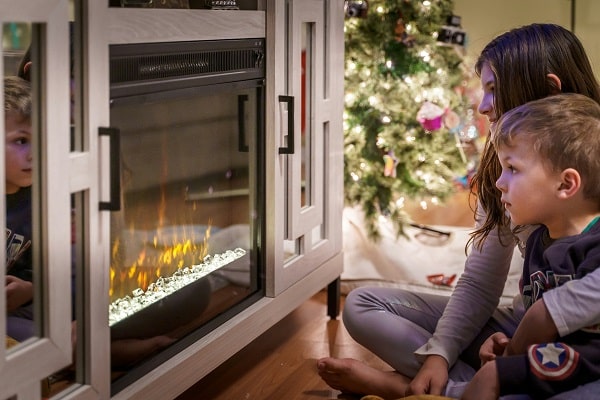Winter’s chill is upon us, and while cozying up in front of a roaring fire sounds inviting, it can also lead to a hefty energy bill. But fear not! Sustainable winter living is all about finding the balance between comfort and cost-efficiency. With a few smart strategies, you can keep warm and save money while minimizing your environmental impact.
In this guide, we’ll explore practical tips and eco-friendly practices to help you stay cozy without breaking the bank. From energy-saving hacks to sustainable home improvements, you’ll be equipped to tackle the winter season with confidence.
Why Embrace Sustainable Winter Living?
1. Reduce Your Carbon Footprint
Sustainable living is all about making choices that benefit both you and the planet. By adopting energy-saving practices, you’re reducing your carbon footprint and contributing to a healthier environment.
Benefits:
- Lower Emissions: Decrease greenhouse gas emissions by using energy more efficiently.
- Eco-Friendly Choices: Opt for sustainable products and practices that have minimal environmental impact.
2. Save Money on Energy Bills
Staying warm doesn’t have to be expensive. Implementing energy-saving strategies can lead to significant savings on your heating bills, allowing you to allocate your budget elsewhere.
Benefits:
- Cost Efficiency: Lower your monthly energy expenses with smart adjustments.
- Long-Term Savings: Invest in sustainable upgrades for lasting financial benefits.
3. Enhance Home Comfort
Sustainable winter living doesn’t mean sacrificing comfort. With the right approaches, you can enjoy a warm and inviting home environment while being kind to your wallet and the planet.
Benefits:
- Improved Comfort: Achieve a consistent and comfortable indoor temperature.
- Healthier Home: Enhance indoor air quality with eco-friendly practices.
Practical Tips for Saving Energy
1. Optimize Your Home’s Insulation
Proper insulation is key to keeping heat in and cold out. Check your home’s insulation and address any gaps or deficiencies to improve energy efficiency.
Insulation Tips:
- Seal Drafts: Use weatherstripping or caulking to seal gaps around windows and doors.
- Insulate Attics and Walls: Add insulation to attics and walls to prevent heat loss.
2. Use Energy-Efficient Heating
Switching to energy-efficient heating options can make a big difference. Consider upgrading to a programmable thermostat or using alternative heating methods.
Heating Tips:
- Programmable Thermostats: Set your thermostat to lower temperatures when you’re not home or while you’re sleeping.
- Space Heaters: Use energy-efficient space heaters for localized heating in rooms you frequent.
3. Maintain Your Heating System
Regular maintenance of your heating system ensures it runs efficiently. Schedule annual check-ups and replace filters as needed.
Maintenance Tips:
- Clean Filters: Replace or clean heating filters regularly to maintain airflow.
- Service Heating Units: Have your heating system serviced by a professional to ensure optimal performance.
Sustainable Home Improvements
1. Upgrade to Energy-Efficient Windows
Energy-efficient windows help reduce heat loss and improve insulation. If your windows are old or single-pane, consider upgrading to double or triple-pane windows.
Window Tips:
- Energy-Efficient Glass: Choose windows with low-E glass coatings for better insulation.
- Window Covers: Use thermal curtains or shades to add an extra layer of insulation.
2. Install Weatherstripping
Weatherstripping around doors and windows prevents drafts and keeps cold air out. This simple improvement can significantly enhance your home’s energy efficiency.
Weatherstripping Tips:
- Choose the Right Type: Select weatherstripping materials that fit your specific needs, such as foam tape or rubber gaskets.
- Apply Correctly: Ensure weatherstripping is applied evenly to create a tight seal.
3. Invest in Insulated Doors
Insulated doors help keep cold air from entering your home and warm air from escaping. Consider upgrading exterior doors to models with better insulation properties.
Door Tips:
- Energy-Efficient Models: Look for doors with high R-values for better insulation.
- Door Sweeps: Install door sweeps to seal gaps at the bottom of doors.
Energy-Saving Habits for Winter
1. Adjust Your Thermostat
Lowering your thermostat by a few degrees can lead to substantial energy savings. Layer up with cozy clothing and blankets to stay warm while reducing your heating costs.
Thermostat Tips:
- Set Back at Night: Lower your thermostat while you sleep or when you’re away from home.
- Daytime Settings: Keep the thermostat at a comfortable but energy-efficient temperature during the day.
2. Utilize Natural Sunlight
Take advantage of natural sunlight to warm your home. Open curtains and blinds during the day to let in sunlight and close them at night to retain heat.
Sunlight Tips:
- Daylight Exposure: Open curtains and blinds during sunny days to harness natural heat.
- Nighttime Insulation: Close curtains and blinds at night to keep heat from escaping.
3. Cook Efficiently
Use your oven and stove efficiently to minimize energy use. When baking, try to cook multiple dishes at once, and use the oven’s residual heat to finish cooking.
Cooking Tips:
- Batch Cooking: Prepare multiple dishes at once to maximize oven use.
- Cover Pots: Use lids on pots and pans to retain heat and reduce cooking times.
FAQs: Sustainable Winter Living
1. How can I stay warm if I don’t have access to energy-efficient appliances?
If you don’t have energy-efficient appliances, focus on improving your home’s insulation and using natural heating methods, such as sun exposure and cooking efficiently. Layering clothing and using blankets can also help keep you warm.
2. What are some low-cost ways to improve home insulation?
Low-cost insulation improvements include sealing drafts with weatherstripping, using thermal curtains, and adding door sweeps. These simple upgrades can make a significant difference in energy efficiency.
3. Are there any government incentives for making my home more energy-efficient?
Many governments offer incentives or rebates for energy-efficient home improvements. Check with local utility companies or government websites for information on available programs and eligibility.
Final Thoughts: Embrace Sustainable Winter Living
Sustainable winter living is all about making smart choices to stay warm, save money, and protect the environment. By implementing energy-saving practices and making thoughtful home improvements, you can enjoy a cozy and eco-friendly winter season.
What are your favorite tips for staying warm and saving energy during the winter? Share your ideas and experiences in the comments below!

